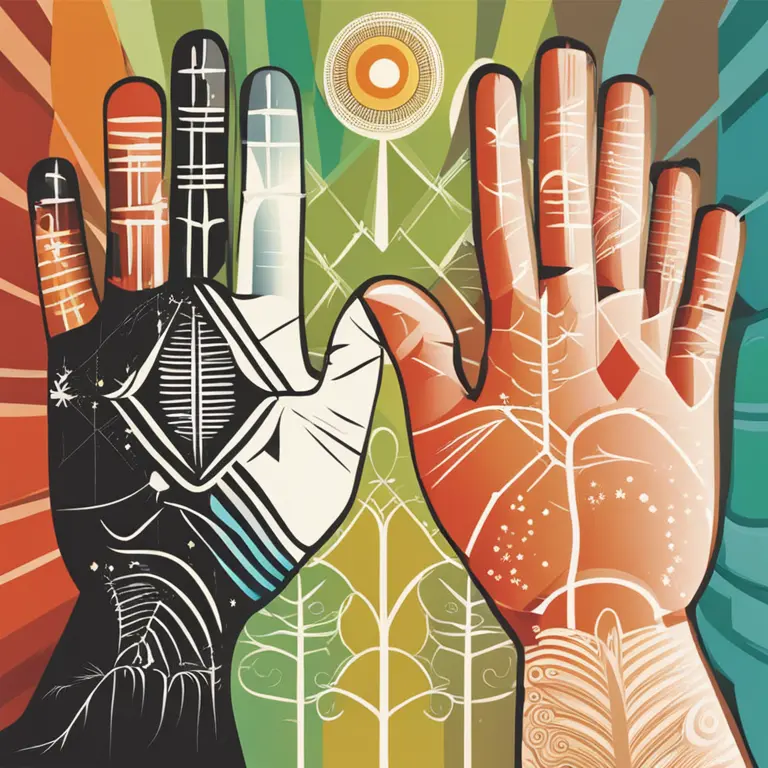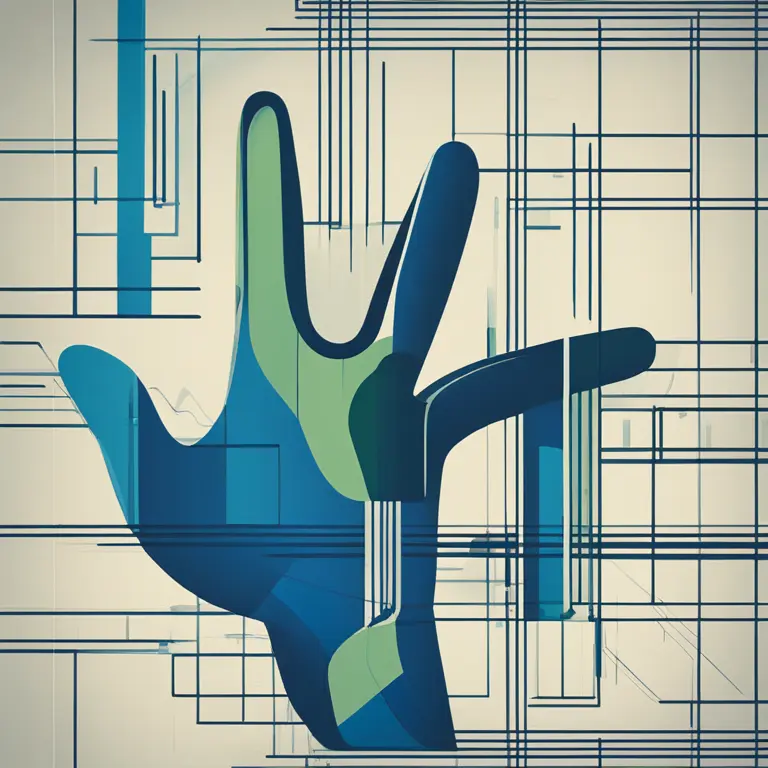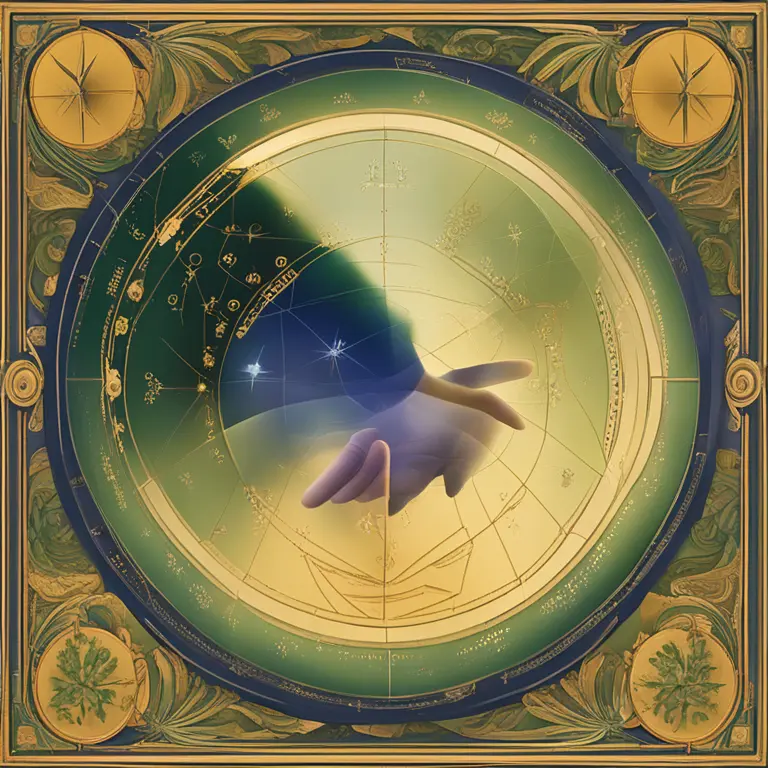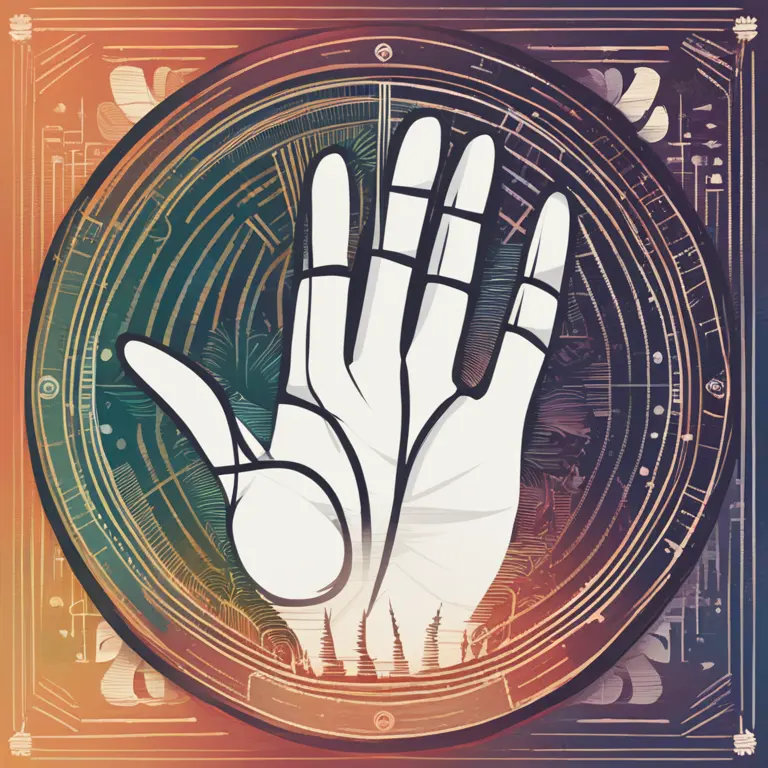
The Essential Guide to Palmistry: Which Hand Reveals Your Future?
Discover the significance of reading the right or left hand in palmistry to unveil the mysteries of your personality and future.
article by Nora Pennington
Introduction to Palmistry
Palmistry is an ancient art with roots tracing back to Indian astrology and Roman fortune-telling. Throughout history, palm readers have examined the human hand to foretell the future and reveal personality traits. As we embrace palmistry's resurgence in 2024, one fundamental question remains: which hand should be read? Traditionally, palmists consider both hands, but each one provides unique insights. In this guide, we shall navigate the terrains of this practice to uncover the significance of each hand in the mystical world of palmistry.

Which Hand to Read – Right or Left?
Palmistry advocates that for right-handed individuals, the left hand reflects the character and beliefs one is born with, while the right hand displays acquired traits and the journey one's life has taken. Conversely, left-handed people should consider this arrangement in reverse. This concept stems from the belief in passive and dominant hands. The passive hand (the one used less) signifies inherited potential, whereas the dominant hand (the one used more) shows what you've done with that potential.

Dominant Hand - The Path You've Created
The dominant hand's role in palmistry cannot be overstated. As the more active hand, it provides current and future insights, crafted by your own actions, decisions, and experiences. Lines and marks on this hand can change over time, reflecting the dynamic nature of our lives. When reading the dominant hand, one should focus on the nuances that illustrate progress, successes, and obstacles overcome, thus offering a live narrative of your life's journey.

Passive Hand - The Blueprint of Potential
In contrast, the passive hand serves as a blueprint of one's innate characteristics and talents. The lines and contours are usually more static, symbolizing the traits and abilities bestowed upon us at birth. It represents a starting point, a foundation from which the narrative of life begins. It holds the key to understanding deep-rooted personal propensities and potential in various areas like career, relationships, and personal growth.

Interpreting Lines and Marks
A palmist will examine several aspects of the hands, including the major lines—heart line, head line, life line, and fate line—as well as minor lines, mounts, and other markings. Each feature carries its own weight in the story told by the hands. For instance, a deep and unbroken heart line on the dominant hand might suggest a fulfilling love life that has been shaped by one's decisive pursuit of happiness.
The Synergy Between Both Hands
The synthesis of the interpretations from both hands presents a complete picture, blending innate disposition with the indelible marks of life's experiences. As we move forward in 2024, the understanding and application of palm readings evolve with modern adaptations and interpretations. The continuous study and appreciation of how both hands' narratives interweave provide a comprehensive understanding of an individual's past, present, and potential future.
Embracing Modern Palmistry
Modern palmistry incorporates traditional practices with new-age perspectives. As society progresses, palmists integrate psychological insights and contemporary lifestyles into their readings. The dynamic nature of the dominant hand, coupled with the static narrative of the passive hand, keeps palmistry a relevant and intriguing practice, reflecting the changing tides of life even beyond 2024.
Published: 1/11/2024
Modified: 1/12/2024
More predictions
Come back here soon to learn more about yourself and your future


The Possibility of Palmistry in Cancer Detection
Examining the claims that palmistry holds any potential in identifying the risk of cancer: a deep dive into the world of mysticism and medicine.


Can Palmistry Foresee One’s Demise?
Delve into the contentious debate about whether palmistry can predict the end of life and the ethical considerations of such a claim.


The Essence of Palmistry: Interpreting Lines and Shapes
Delve into the world of palmistry to discover the meanings behind the lines and shapes etched into the palms of your hands.